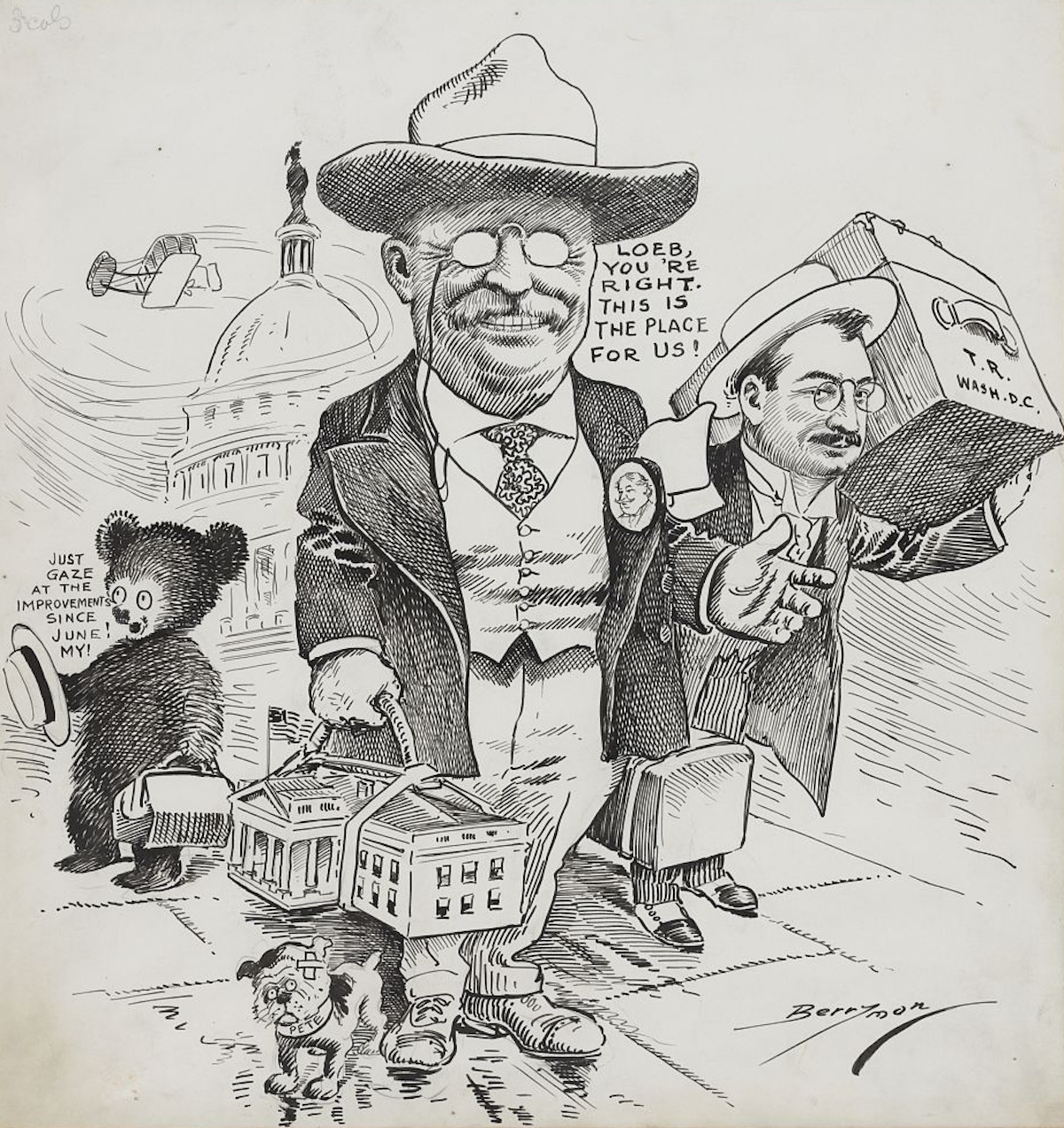Theodore Roosevelt and the Teddy Bear
How did Washington Post cartoonist Clifford Kennedy Berryman – with a little help from Theodore Roosevelt – spark the creation of the world’s favourite soft toy?

Children’s dolls, when not in human form, have often been based on cartoon characters, from Mickey Mouse, Felix the Cat, Bonzo the Dog and Bugs Bunny in the 1920s and 30s to Snoopy, Garfield and Pingu in more recent times. Bears have also been popular – Rupert, Winnie the Pooh and Paddington being celebrated examples. Most of these were originally designed as merchandizing spin-offs from comic strips, children’s books or animated films that were read or watched by children. It is extremely rare for a child’s toy to derive from a political cartoon as these are aimed at adults. However, one of the most popular children’s toys of all time had its origins in a political cartoon published in the Washington Post in 1902. It concerned the Republican US President Theodore Roosevelt (1858-1919), was drawn by the paper’s editorial cartoonist Clifford Berryman, and the soft toy it gave birth to was the Teddy Bear.






